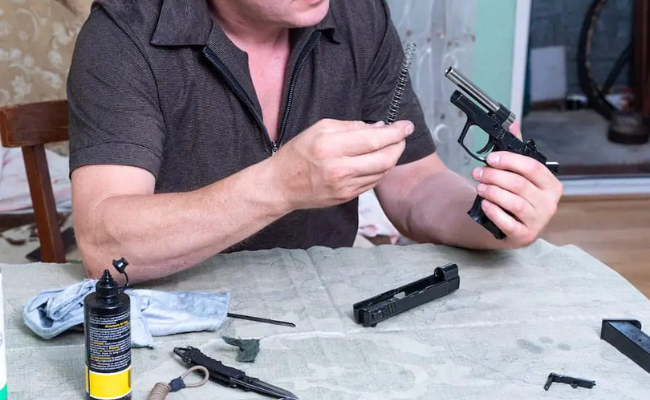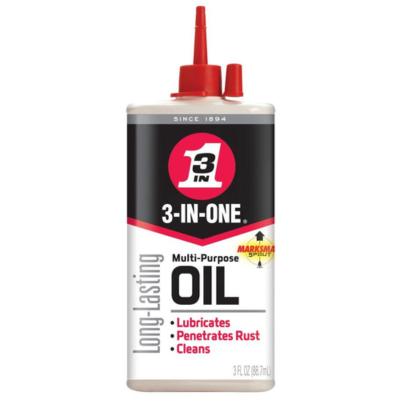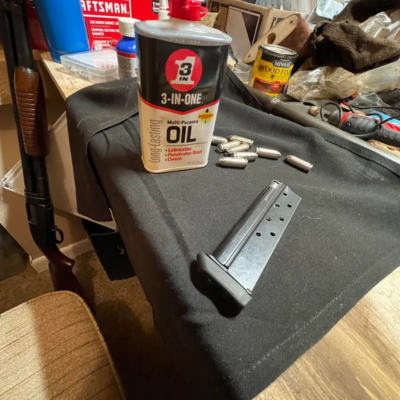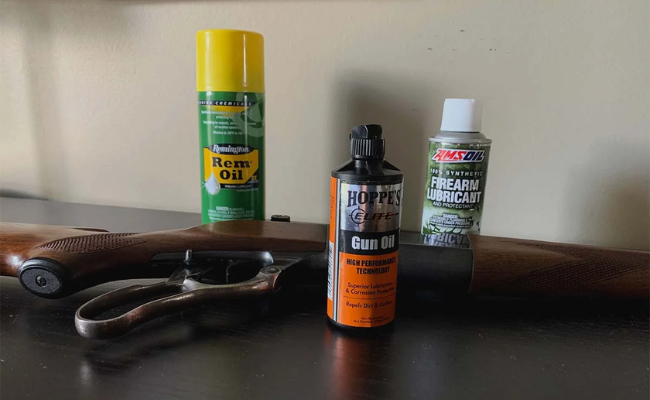Oil and firearms go hand in hand, but the type of oil you use can make a significant difference in performance and maintenance.
One commonly available lubricant is 3-in-1 oil, often used for household applications like squeaky hinges and rust prevention.

But is this versatile product suitable for firearms? This article examines the pros and cons, with perspectives from experts in gun care, to help you make an informed decision about using 3-in-1 oil on your guns.
Can you use 3 in 1 oil on guns?
Certainly, you can use 3-in-1 oil on guns as a general-purpose lubricant, cleaner, and rust preventative. However, there are several nuances to consider before making it a regular part of your firearms maintenance routine. For starters, firearms are constructed from a variety of materials including steel, aluminum, and polymers. While 3-in-1 oil is a versatile product, it may not be optimized for all these materials, potentially leading to less effective lubrication or even corrosion over time.

Moreover, specialized gun oils are formulated to meet the particular demands of firearms, including high pressures and temperatures. 3-in-1 oil may provide adequate lubrication in normal conditions but may not perform as well in extreme temperatures or under the high pressure of rapid firing. This could lead to reduced gun performance or even malfunctions.
Safety is another important consideration. Guns are precision instruments that require reliable lubrication to function safely. Specialized gun oils undergo rigorous testing to ensure they do not compromise the safety of the weapon, such as causing jams or misfires. The safety performance of 3-in-1 oil in this context is less well understood, and using it could potentially increase the risk of a malfunction.
Lubrication for Firearms
Guns require lubrication to function optimally. Lubrication reduces friction, minimizes wear and tear, and prolongs the lifespan of your firearm. While specialized gun oils are widely recommended, alternative options like 3-in-1 oil are also considered.

Traditional gun oils are engineered for specific purposes and conditions, offering optimal viscosity and resistance to environmental factors like moisture and temperature fluctuations. These are generally tailor-made for guns, undergoing rigorous testing to ensure they meet the required standards.
On the other hand, 3-in-1 oil is a multi-purpose lubricant commonly used in household applications, offering three functions: lubrication, corrosion prevention, and cleaning. But does this jack-of-all-trades measure up to specialized gun oils?
3-in-1 oil is cheaper and more readily available, providing convenience for emergency situations where specialized gun oil isn’t at hand. However, one should consider the longevity and effectiveness of 3-in-1 oil in comparison to specialized gun oils.
For those who use guns casually or occasionally, 3-in-1 oil may seem like a viable alternative. However, for those committed to the longevity of their firearms, the debate takes on a different dimension.
Compatibility with Gun Materials
The materials used in constructing firearms vary widely—steel, aluminum, and polymer components all have different needs in terms of lubrication and corrosion resistance. Some oils may be better suited for one material over another.
3-in-1 oil, given its general-purpose formulation, may not meet the specialized requirements of specific gun materials. Although it can lubricate and protect to some extent, it may not be as effective as specialized gun oils designed for specific materials.

Metal parts, for instance, require robust rust protection. While 3-in-1 oil offers some level of rust prevention, specialized gun oils may offer a longer-lasting shield against corrosion.
Polymer and composite components are increasingly common in modern firearms. While 3-in-1 oil might be suitable for lubricating these materials, it may not offer the best protection against wear and tear in the long term.
Researching and understanding the compatibility of 3-in-1 oil with various gun materials is crucial before making it a regular part of your gun maintenance routine.
Compatibility with Gun Materials
The materials used in constructing firearms vary widely—steel, aluminum, and polymer components all have different needs in terms of lubrication and corrosion resistance. Some oils may be better suited for one material over another.
3-in-1 oil, given its general-purpose formulation, may not meet the specialized requirements of specific gun materials. Although it can lubricate and protect to some extent, it may not be as effective as specialized gun oils designed for specific materials.
Metal parts, for instance, require robust rust protection. While 3-in-1 oil offers some level of rust prevention, specialized gun oils may offer a longer-lasting shield against corrosion.
Polymer and composite components are increasingly common in modern firearms. While 3-in-1 oil might be suitable for lubricating these materials, it may not offer the best protection against wear and tear in the long term.
Researching and understanding the compatibility of 3-in-1 oil with various gun materials is crucial before making it a regular part of your gun maintenance routine.
Expert Opinions and Recommendations
Opinions among gun owners and experts vary when it comes to using 3-in-1 oil as a substitute for specialized gun oils. While some consider it a convenient and effective alternative, most experts advise sticking to products designed explicitly for firearms.
Many professional shooters and gunsmiths lean towards specialized gun oils because of their proven reliability and performance. They argue that the added cost of specialized oil is a worthwhile investment for maintaining a high-functioning, reliable firearm.

User reviews and online forums also provide a mixed bag of opinions. While some individuals swear by the efficacy of 3-in-1 oil for casual use, others staunchly advocate for specialized products.
Before opting for 3-in-1 oil or any other alternative, consult your firearm’s manual and consider reaching out to the manufacturer for their recommendations.
Given the wide array of factors to consider—material compatibility, performance impact, safety, and expert opinions—it’s evident that while 3-in-1 oil can serve as a stopgap measure, it may not be the best long-term choice for your firearm maintenance needs.

